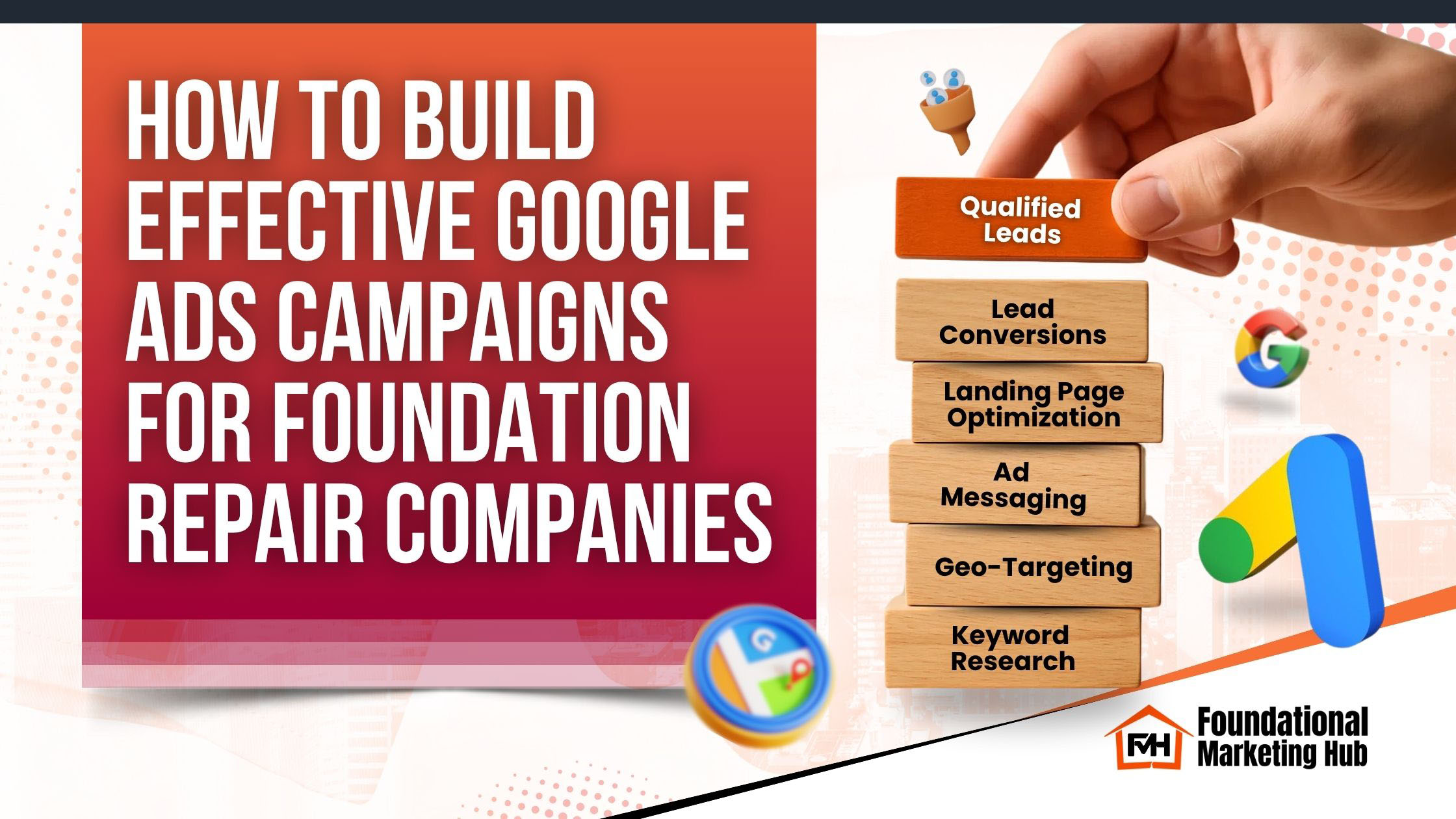
Pay Per Click Google Advertising for Foundation Repair: How to Win in 2025
It’s a rainy spring evening in Missouri, and this is exactly when pay per click Google advertising proves its value. After a full day of steady downpour, a homeowner in St. Charles walks into the basement and finds a large crack in the wall with water pooling on the floor. Panic sets in. They need a solution immediately.
Looking for help, they grab their phone and search: “foundation repair St. Charles MO.”
At the top of the Google results, several ads appear labeled “Sponsored.” These include visible phone numbers and a “Google Guaranteed” badge. The homeowner clicks the first result and quickly connects with a local contractor who can respond the very next day.
This kind of outcome does not happen by chance. It results from pay per click Google advertising that is intentionally configured to reach people in specific service areas.
While the homeowner is searching, a foundation repair business in Missouri already has a live, geo-targeted campaign running on Google Ads. The company pays nothing until someone clicks the ad. In this case, that click turns into a job worth $7,000.
In addition to the revenue, the business earns a five-star review, receives a customer referral, and establishes a lasting relationship.
In 2025, pay per click Google advertising is one of the most effective strategies to reach homeowners in need of foundation repair. Whether you serve Kansas City, Columbia, Springfield, or any nearby area, PPC helps your business show up at the exact moment a homeowner is ready to take action.
Now let’s explore how you can build a campaign that delivers results like this for your own business.
Best Pay Per Click Google Advertising Strategies for Service Businesses in 2025
How to Launch a Pay Per Click Google Advertising Campaign that Actually Converts in 2025
Running Google Ads in 2025 isn’t just about turning on a campaign and hoping for calls. The key to success lies in setting up your first campaign with precision, so every click brings you closer to a real customer especially in competitive industries like foundation repair.
Here’s how to do it right the first time:
The Formula for High-Converting Landing Pages
Even the best campaign setup can fall flat if your landing page doesn’t seal the deal. In this section, we’ll break down the formula for building a high-converting, lead-generating landing page that’s designed to win in 2025.
Succeed with Pay Per Click Google Advertising on a Small Budget
Think you need thousands of dollars to make Google Ads work? Think again. Many small businesses are seeing strong results running Google Ads with budgets as low as $10–$20 per day. The key is not how much you spend but how smartly you spend it.
If you’re working with a limited PPC budget, here’s how to get the best return from every click:
Making Pay Per Click Google Advertising Work For You
PPC in 2025 is not just about showing up. It’s about showing up with purpose. With the right strategy, focused campaigns, and landing pages that convert, foundation repair and waterproofing businesses can turn clicks into real customers.
If you’re ready to stop guessing and start growing, we can help. At Foundational Marketing Hub, we specialize in digital marketing tailored for foundation repair and waterproofing pros. Book a free discovery call today and let’s talk about what’s possible for your business.





